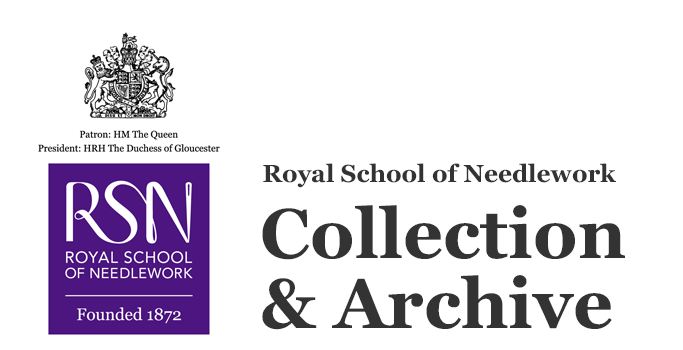Pocket book
Object name
Date made
1789
Place made
Description
Pink and cream satin embroidered pocket book with two interior flaps, made in 1789.
Content description
1789 pink and cream satin embroidered pocket book with two interior flaps, which unfold into individual pockets. Each of the four outside panels features a different flower, depicting a carnation, a pansy, a lily, and a rose on pink satin. The flowers are worked in small stem stitches and long and short stitches for a realistic effect. Each panel has a double border, with a straight, two-toned green line of stem stitches and a twisting metallic thread around it worked as s-ing.
The interiors of the four panels feature similar borders and have openings at the top to hold goods. The outer two panels depict golden wheat on pink satin and are worked in silk thread in stem and long-and-short stitches. The centre panels are worked on a cream silk and each have a circle of tarnished spangles, held down by small loops of metallic thread, crowned by two strands of wheat worked in silk and metallic thread. Inside the circles, one panel features the date '1789', while the other features the initials 'JF', both in metallic thread s-ing.
Pocket books were carried by both men and women in the 18th and early 19th centuries, tucked away in a man’s coat pocket or the pockets women wore under their skirts. These pocket books held precious objects such as paper money, letters, important documents, and sewing supplies. In the United States the vast majority of pocket books were adorned in flame stitch designs worked in wool threads, whereas in Europe designs tended to be more floral and worked in silk threads. It is believed that six pocket books from this period were given to the RSN by Mary of Teck, Queen of the United Kingdom and the British Dominions, and Empress of India. This is one of that group.
The interiors of the four panels feature similar borders and have openings at the top to hold goods. The outer two panels depict golden wheat on pink satin and are worked in silk thread in stem and long-and-short stitches. The centre panels are worked on a cream silk and each have a circle of tarnished spangles, held down by small loops of metallic thread, crowned by two strands of wheat worked in silk and metallic thread. Inside the circles, one panel features the date '1789', while the other features the initials 'JF', both in metallic thread s-ing.
Pocket books were carried by both men and women in the 18th and early 19th centuries, tucked away in a man’s coat pocket or the pockets women wore under their skirts. These pocket books held precious objects such as paper money, letters, important documents, and sewing supplies. In the United States the vast majority of pocket books were adorned in flame stitch designs worked in wool threads, whereas in Europe designs tended to be more floral and worked in silk threads. It is believed that six pocket books from this period were given to the RSN by Mary of Teck, Queen of the United Kingdom and the British Dominions, and Empress of India. This is one of that group.
Dimensions
width: 17.5cm
length: 38cm
length: 38cm
Materials
Stitches
Techniques
Motifs
Credit line
Possible gift of Her Majesty Queen Mary.
Catalogue number
RSN.32.d
© Royal School of Needlework

